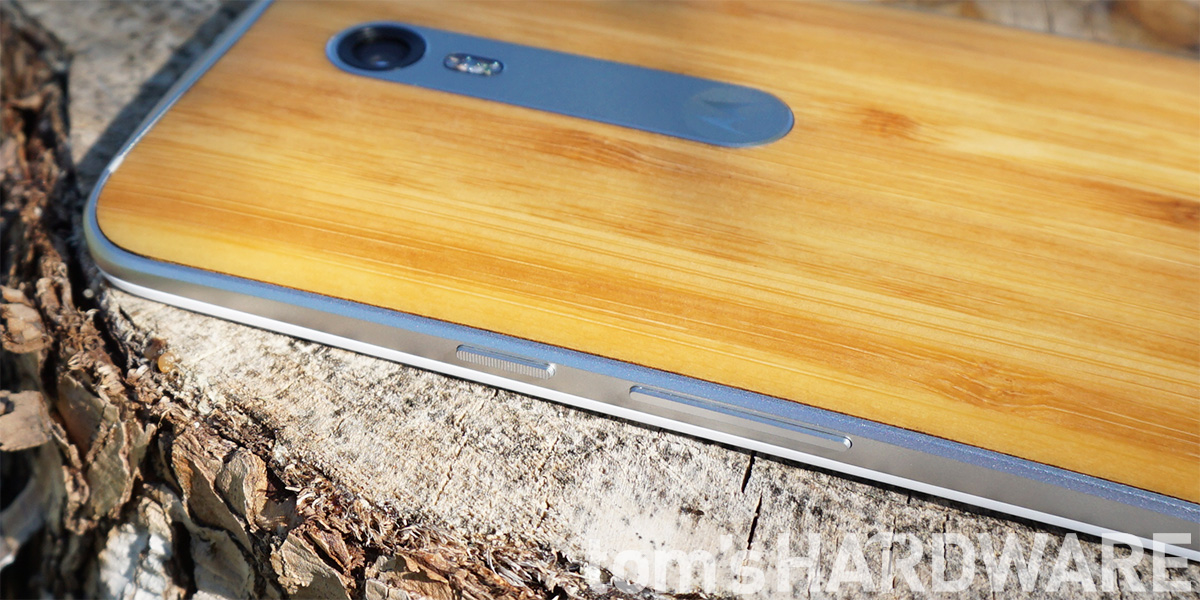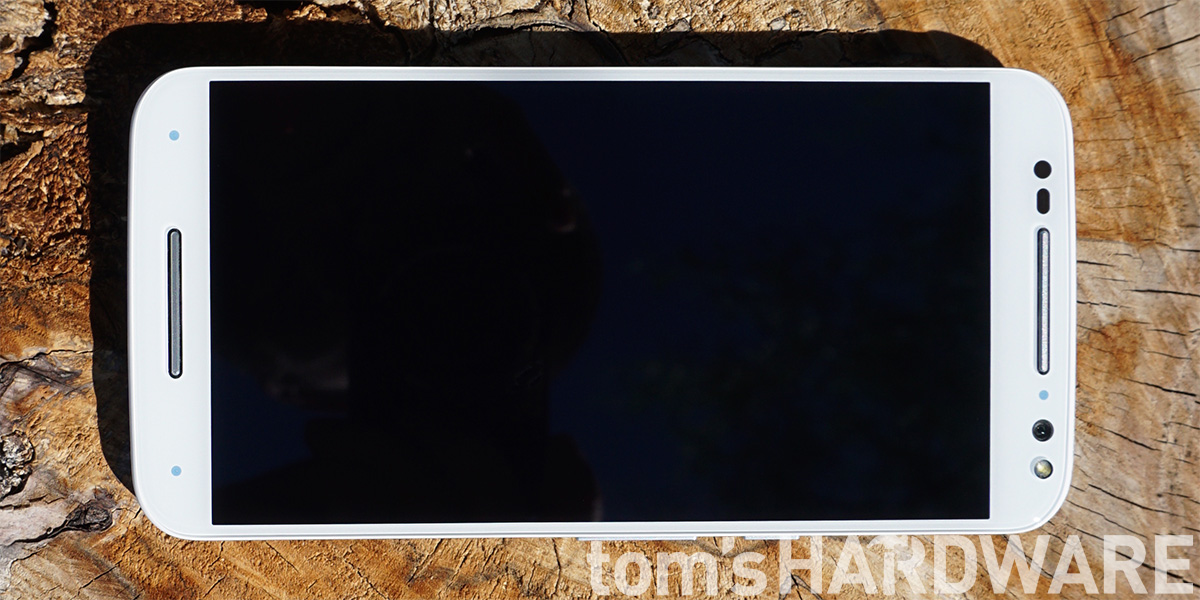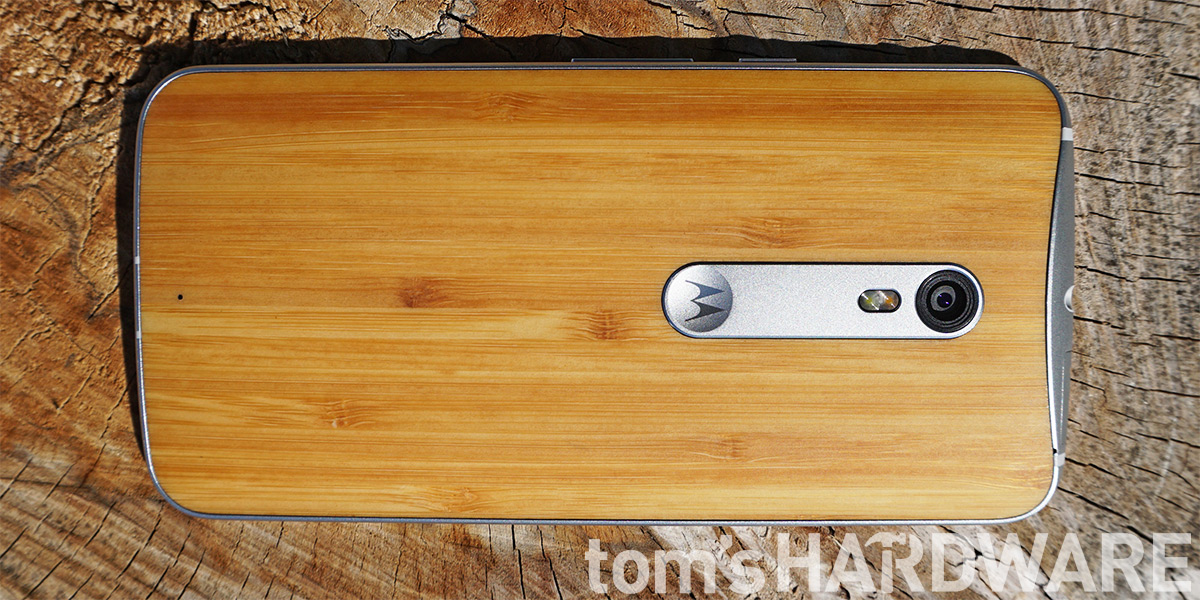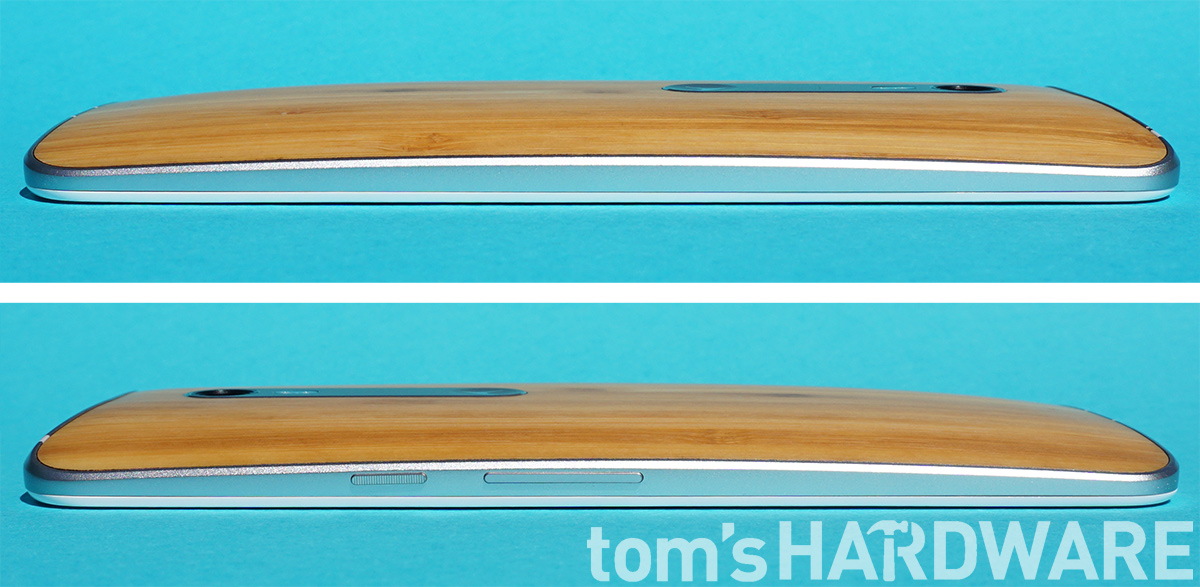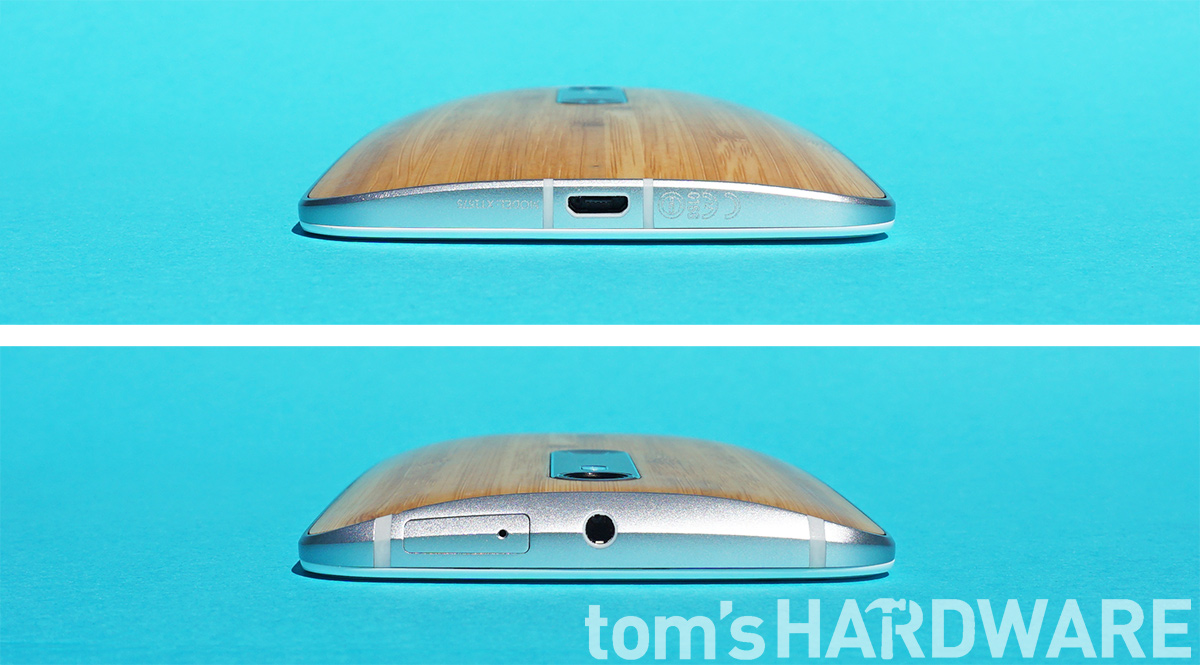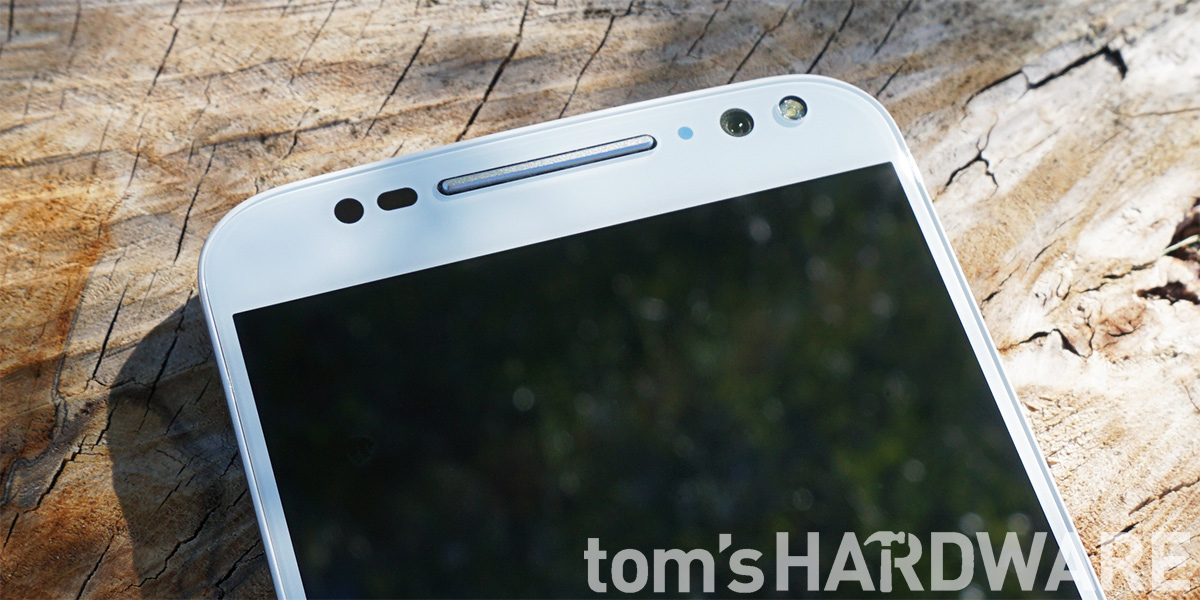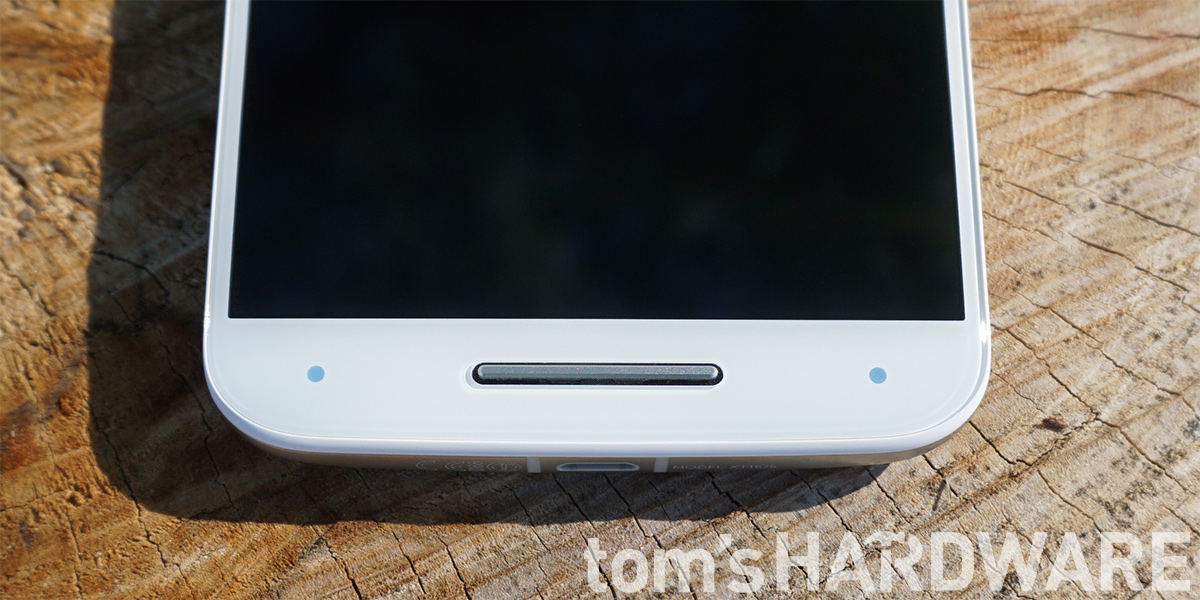Motorola Moto X Pure Edition Review
The Moto X Pure Edition’s software is purely Android, its attractive styling is purely Motorola, and its customization options make it purely yours.
Why you can trust Tom's Hardware
Hardware Design
The Moto X Pure Edition is Motorola’s flagship device, and the phone certainly looks and feels high-end; its build quality is excellent, and its aluminum frame makes it feel sturdy, adding just enough mass to convey quality without being heavy. The corners and back are nicely rounded too, making it comfortable to hold.
The Moto X uses the same design language as other recent Motorola phones, with obvious similarities to the Nexus 6 and the current Moto G, giving it a distinct look that helps it stand out from all of the other rounded rectangles. What really sets the Moto X apart from other phones, however, is the ability to personalize the phone. Using the Moto Maker website you can mix and match a variety of colors and materials to make something that’s uniquely yours. The front bezel comes in either black or white depending on the aluminum frame’s finish, and the metal accent pieces (speaker grilles on the front and strip around camera on the back) come in a number of different colors. The back cover comes in three different materials. Genuine wood options include Forest Stewardship Council (FSC) certified Bamboo, Ebony, Walnut, and Charcoal Ash. There’s also genuine Saffiano leathers sourced from the Horween Leather Company that come in Natural, Cognac, Black, and Red. The finish of each leather is unique and will age over time as any leather would. For those not into wood or leather, there’s also Coated Silicone Rubber (CSR) available in multiple colors. While not as premium looking as the natural materials, it resists fingerprints, fading, and discoloration. The CSR backs have a diagonal pattern of raised ridges that combine with the rubber’s inherent grippiness to make the Moto X easy to hang on to. The downside is that dust and crumbs tend to collect in the valleys between ridges.
Motorola allowed us to use Moto Maker to configure our review unit, and it was an experience we thoroughly enjoyed. After cycling through various color and material options, some of which are more humorous than stylish, we settled on a light silver frame with white front paired with matching silver accents and a bamboo back cover. Wood is hardly the first material that springs to mind when you think about smartphones and cutting-edge technology, but when combined with the aluminum frame, it just works.
Taking a closer look at the removable back shows the new metal accent strip surrounding the camera at one end and incorporating the Motorola logo into a concave dimple—which is a convenient place to rest your index finger—at the other end, with the dual-color LED flash in between. This design element is the biggest departure from the Moto X (2nd Gen), but is consistent with the current Moto G (3rd gen). The only other feature on the curved back is a small pinhole near the bottom for a microphone.
The aluminum frame has a light satin finish and a chamfered edge that sits flush with the back. The metal buttons are located on the right edge, leaving the left edge smooth. The power button, which has a ridged pattern to help locate it by feel, sits just above the single-piece volume rocker. Our only complaint is that it’s difficult to pick up or handle the phone without inadvertently pressing either the volume or power buttons because of how close they are to the midpoint. Sliding the buttons up a little closer to the top, or relocating the volume rocker to the left edge, would definitely help.
There’s a microUSB 2.0 port centered on the bottom edge flanked by two plastic antenna bands. The 3.5mm headphone jack is centered on the top edge, with the access door for the combination Nano SIM/microSD card tray sitting to one side.
A plastic frame surrounds the 5.7-inch display, but the entire front is covered over with Corning Gorilla Glass 3. The side and lower bezels are just as narrow as the LG G4’s, giving the Moto X Pure Edition an excellent 76% screen-to-body ratio. The small bezels above and below the screen each contain a speaker grille with a raised metal bar that’s color-matched to the accent strip on the back. These metal bars are more than just pieces of flair, though; they help protect the screen when the phone is sitting face down and both speakers are functional, meaning the Pure Edition has front-facing stereo speakers.
Get Tom's Hardware's best news and in-depth reviews, straight to your inbox.
The bezel area above the screen is a bit more cluttered than usual. Ambient light and proximity sensors flank the speaker on the left, while an infrared sensor—which activates Moto Display when it senses movement—flanks it on the right. The front-facing camera and LED flash sit in the upper-right corner.
The second speaker and microphone are centered below the screen, with two additional infrared sensors in each corner.
While most phones look more and more alike with each iteration, Motorola’s phones stand out in a good way. The front-facing speakers and metal accent strip on the back are unique design features, as are the myriad ways to personalize the phone’s appearance. The Moto X Pure Edition’s materials, construction, and smooth lines give it a premium look and feel, with button placement our only quibble.
